This site contains affiliate links. As an Amazon Associate, I earn a commission from qualifying purchases at no extra cost to you. Full Disclosure Here.
One of the most complex and widely debated topics within the modern firearms community is caliber selection for long-range shooting. This topic of long-range calibers is debated across many different disciplines including PRS, Tactical, Military/Law Enforcement, Hunting, etc.
The truth is that there is no one best long-range caliber for every job and there are many factors to consider. Different shooters will all have different calibers that are better suited for their specific goal or mission.
At A Glance: Our Top 5 Picks For Long Range Calibers in 2024
- Best for Beginners: 5.56mm/.223 Remington
- Minimal Recoil: 224 Valkyrie
- Best for Long Range: .300 Winchester Magnum
- Best for Seasoned Shooters: 6mm Creedmoor
- Best Value: .338 Lapua Magnum
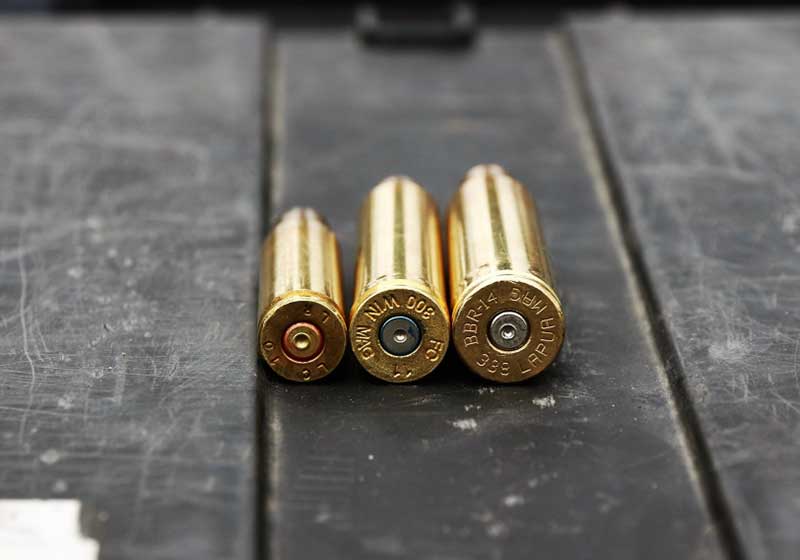
To find the ideal caliber you’ll have to ask yourself a few questions. What is your mission? What is your goal? How do you want your rifle to perform? Are you operating a bolt or gas gun? Do you have the equipment and knowledge to reload? Is your rifle shooting steel or live targets? Is your shooting hobby or mission dependent on a limited budget? All of these factors will ultimately decide if you will be sticking with ole reliable – the .308 Winchester or reaching deeper into your pockets for the new and improved .300 Norma Magnum.
Just like anything in life, each caliber you pick will have a list of pros and cons. After answering the questions above, the rest of this guide should be able to help you find which round is right for your mission and budget.
I am here to share what knowledge and experience I have to help you pick a viable option. I am not here to say that this round or that round is the best for a military sniper or a bench rest shooter. Overall best performance for the cost and practicality is the goal.
The calibers up for debate will be: .223/5.56mm, .224 Valkyrie, .243 Winchester, 6mm Creedmoor, 6.5mm Grendel, 6.5mm Creedmoor, 6.5 PRC (Precision Rifle Cartridge), 6.5x47mm Lapua, .260 Remington, .308 Winchester, .30-06 Springfield, .300 Winchester Short Magnum, .300 PRC (Precision Rifle Cartridge), .300 Winchester Magnum, .300 Norma Magnum, .338 Lapua Magnum, and the .338 Norma Magnum.
Now, are these the only viable options for a long-range cartridge for you?
No. But this list is comprehensive enough to cover the most popular and best-performing rounds that are regularly used by shooters across most long-range disciplines. Hopefully, at the end of this article, you can apply the same questions and principles to select which caliber you want to dive into the awesome world of long-range shooting.
Now that we have laid out the calibers in question, next, let’s go over the parameters in choosing the best round for you. We will be discussing: Muzzle Velocity, Ballistic Co-efficient, Remaining Energy, Transonic Range, Recoil Condition, Cross-Platform Use, Ammo Availability, Barrel Life, and Overall Practicality. Depending on how often you shoot, price range, and shooting range (distance) availability, some of these parameters will not be as important. For myself, I have up to 800 meters to shoot at a private location, so grabbing a .338 Lapua Magnum with a max effective range well over 1600m makes no sense.
Table of Contents:
| IMAGE | PRODUCT | |
|---|---|---|
Best for Beginners 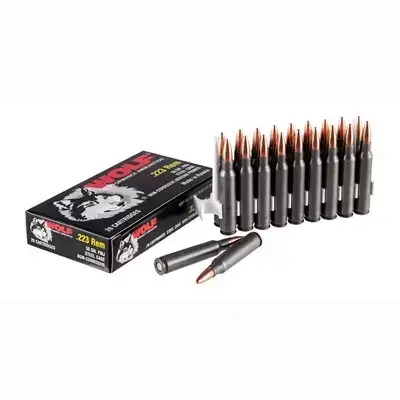 | 5.56mm/.223 Remington
| VIEW ON BROWNELLS → |
Minimal Recoil 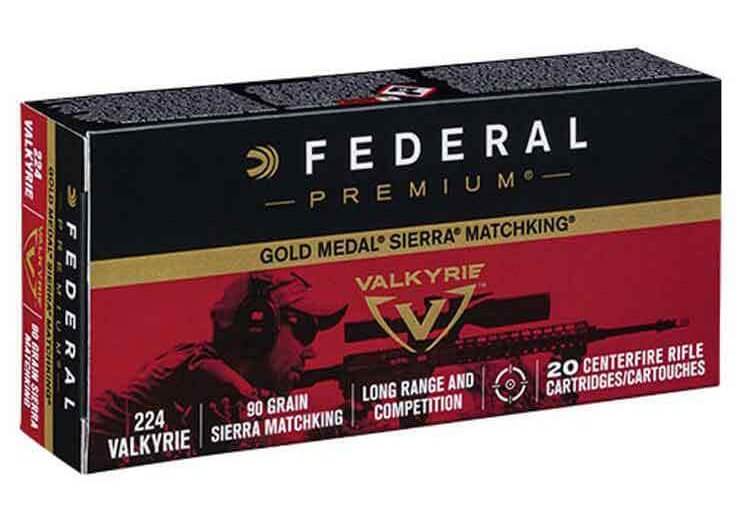 | 224 Valkyrie
| VIEW ON SPORTSMANS → |
Best for Long Range 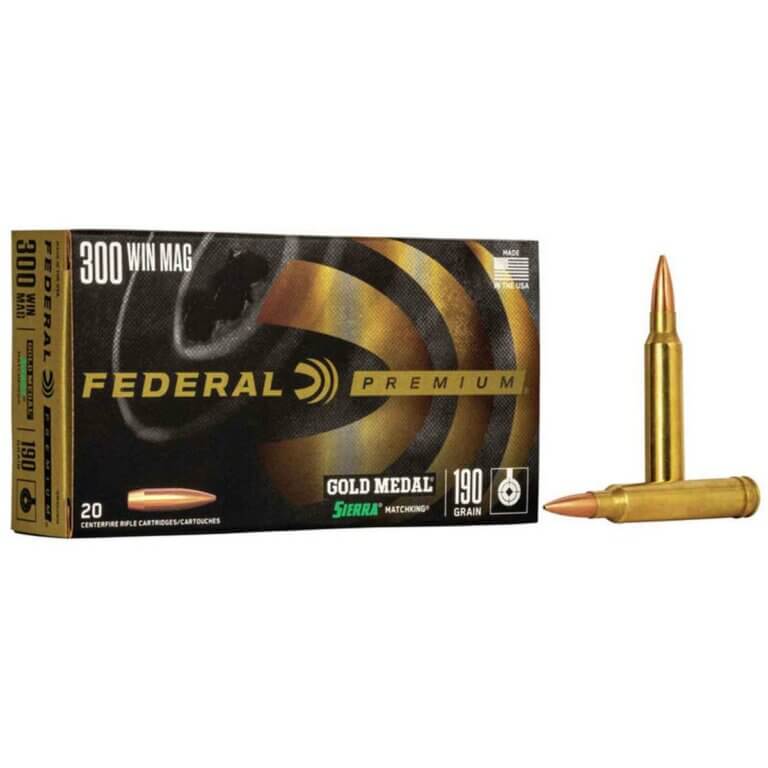 | .300 Winchester Magnum
| VIEW ON SPORTSMANS → |
Best for Seasoned Shooters 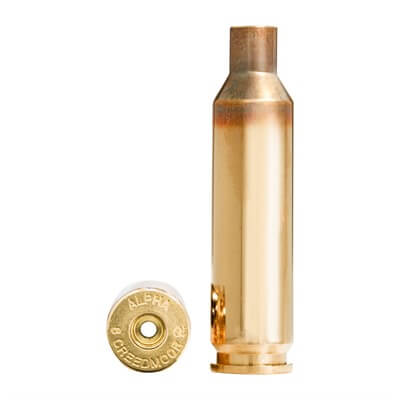 | 6mm Creedmoor
| VIEW ON SPORTSMANS → |
Best Value 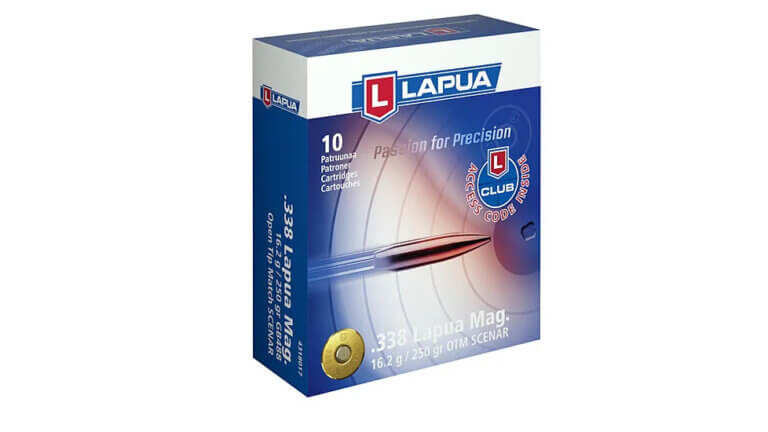 | .338 Lapua Magnum
| VIEW ON OPTICS PLANET → |
Considerations When Selecting a Caliber
Muzzle Velocity (MV)
Everyone knows that speed kills. With regard to external and terminal ballistics, a screaming Muzzle Velocity has its ups and downs. When thinking of muzzle velocity, a faster round is not always better. A faster MV does mean the round is impacted LESS by the wind than a slower MV. This, generally speaking, means less error due to poor wind judgment will occur when firing long distances. Time of Flight (ToF) (the time it takes between squeezing a trigger and the round impacting the desired target) helps describe a scenario in which a shooter can put a round on target in a shorter amount of time, but does not describe the profound damage done to the barrel. Most “Magnum” cartridges have 10 times less barrel life than standard cartridges.
If you are investing $800 on a Proof Research, carbon-wrapped barrel…replacing that every 1,500 rounds will be costly. Muzzle Velocity is also a value that is never constant. Several factors like powder temperature sensitivity, barrel length, ammunition consistency, and atmospheric conditions will all change your MV value. Also, as identical as you can recreate two firearms and two exact ammo loads, those two guns will never have the same exact MV.
It’s not uncommon in the sniper community to see MV’s differ by up to 150 fps (feet per second) across two different M110’s both shooting M118LR ammunition of the same lot. All in all, don’t get TOO hung up on MV’s. A car that accelerates 0-60mph faster than another car, does not mean it’s the best car overall.
Ballistic Coefficient (BC)
This topic may be daunting to some readers because the actual numerical values in which we represent a projectile’s Ballistic Coefficient seem like arbitrary numbers. You may see something like this: 6.5mm 140-grain VLD G1 BC: 0.593 G7 BC: 0.304. So what does that mean? A BC number can be represented in several different G values or standards. Currently, G1 through G8 and GL is the only mathematical models to express BC’s. G7 is the most current and most accurate measurement of the predicted flight of a long-range projectile. Basically, whatever Gx model is used, will be the standard bullet profile shape to compare off of. The two most common BC’s used are G1 and G7 below:
If you notice the G7 profile has a more streamlined design. It is meant for the traditional long-range projectile; featuring a long, slender ogive and a boat-tail rear end. Simply speaking, the BC refers to how well a bullet navigates gravity, air density, and wind. The higher the BC number, the more aerodynamic and better performing the projectile will be. This is especially important to those of you who reload and can tailor a custom load for your rifle. When buying “precision” off-the-shelf ammo, most of the time you will not have the luxury of thumbing through several different BC’s of the same caliber and ammo manufacturer. Handloading ammunition can reap the reward of selecting the exact projectile with the exact desired BC.
Remaining Energy (RE)
The first two sections, Muzzle Velocity, and Ballistic Coefficients are values that the projectile or ammunition manufacturer would display as a selling point of the round. Another ballistic value that has importance is the Remaining Energy (RE) of the round at any given range. The RE is a culmination of MV, BC, and bullet weight.
In order to find this value, usually, a ballistic solution software would have to compute the RE, on what is called a Range Card. Programs like Applied Ballistics (by far the best) can easily chart out in a spreadsheet-like format, all sorts of information important to long-range shooters. Below, is an example of a Range Card computed by the Applied Ballistics software.
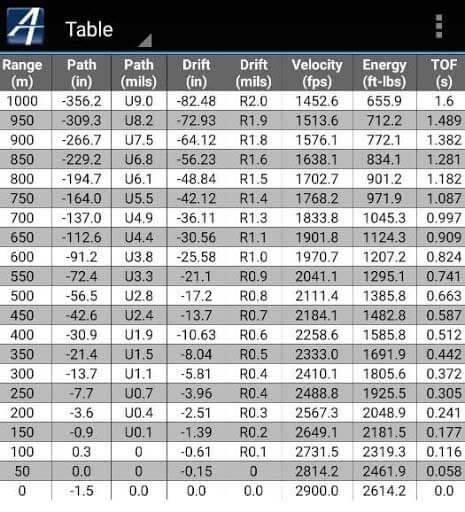
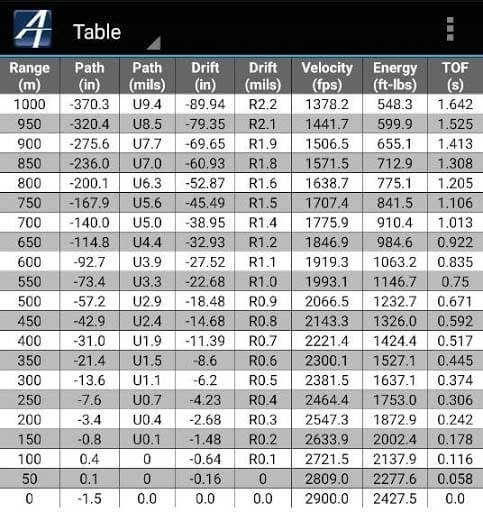
At 1000m, look at how much more RE the 140gr bullet has over the 130gr. Over 100 ft-lbs difference! Although common sense describes how RE will affect your ballistic performance, if you’re a steel or paper target shooter, RE does not play a large factor. Mil/LE and Hunting communities need the RE factor for hard-hitting, threat/animal stopping performance.
I’m not going to dive too deep into terminal ballistics for the purpose of this article. The research is out there if you need it. Just remember, when choosing your Long Range cartridge, every metric counts and affects overall performance.
Transonic Range (TR)
Any seasoned long-range shooter will tell you that understanding the dynamics of Transonic Range (TR) is critical in overall success. To explain Transonic Range, think about the physics of a football. The shape of the football does not allow sustained flight if the ball is thrown end over end. It will tumble erratically and fall short of the intended target. A quarterback must spin the football in a way to achieve a tight spiral. This concept relates exactly to how a projectile fired from a rifle achieves accurate, sustained flight.
In physics, gyroscopic stability explains that the rotational spin on a projectile will keep it on its initial course. Unless you will be loading subsonic rounds, all standard Long Range rifle calibers maintain supersonic flight (Mach 1 or greater than 1125 fps). Transonic speed is the point in a bullet’s trajectory where it slows down and transitions from supersonic to subsonic (Mach 1-Mach 0.7 or 1125-880 fps). So how does this relate to selecting the best Long Range caliber?
A bullet traveling at supersonic speed pushes vapor in the air to create a cone around itself. As it passes through Transonic Range, the vapor cone dissipates, leaving the bullet exposed to turbulent, “dirty” air. Gyroscopic Stability is lost in the Transonic Range and the bullet begins to pitch and yaw and ultimately tumble.
Ideally, projectiles that have a higher BC, will retain their MV over a longer range. This means that the projectile will reach its Transonic Range at a further distance; increasing its overall effective range. Looking at the .308 Winchester, most loads will reach TR on average at 900-1,000m, making shots past 1,000m inconsistent. When comparing TR values, think of it this way. The caliber in question will likely perform erratically past its TR value.
Recoil Condition
The macho days of showing off to your friends by shooting the .50 AE Desert Eagle or even being lucky enough to fire the M107 in the military are over. You will not impress anyone serious in the Long Range community by selecting the largest bore LR caliber if you can’t properly mitigate and control the recoil of your system.
A lot can actually affect the observed recoil of a Long Range rifle. I’m not going to dive too deep down that rabbit-hole, or even techniques to help. That’s for another day. What I can tell you is that choosing the right caliber in relation to recoil can make or break your performance as a shooter…especially if you’re new to the game. If you are inexperienced, you’re in luck…because today’s Long Range shooting community is being flooded by great, streamlined, low-recoiling cartridges.
The world finally caught on that bigger and louder, does not equate to better performance at extended ranges. That being said, to reach out to the big leagues (+1600m) you will definitely need the larger magnum rounds. All in all, pick something that will be pleasant for you to shoot over and over. Too much felt recoil can build bad habits like target flinch…even for experienced shooters.
Certain accessories like muzzle brakes and suppressors drastically reduce recoil (up to 70% reduction). Unfortunately, most (all) of you will not be able to head to the local range and rent a rifle in each of the aforementioned calibers. I will do my best to adequately describe what can be felt.
Cross-Platform Use
Now, this parameter may not be too important to most of you out there, searching for the best Long Range caliber. BUT, just keep in mind that sticking to one caliber, and being able to use that caliber in multiple systems does have advantages. For example, when the inception of the M110 came to the Army sniper community some guys hated leaving behind their trusty M24’s.
But once they saw just how quickly they could engage multiple, long-distance targets…the advantages of the gas gun were very relevant. One good thing about switching between the M24 to the M110 was that snipers were already familiar with the M118LR round.
Sniper teams were already comfortable with the way a 308 performed. So having the mission flexibility to own a heavy, long-barreled bolt gun AND a lightweight, semi-auto gas gun that fires the same familiar round…is priceless. Although they exist, it is not very feasible or common to find gas systems that will feed the longer, magnum cartridges (i.e. 300 WinMag, 338 Lapua Mag., etc.). So keep this in mind when choosing an LR round for you. Do you intend to run the same caliber across bolt and semi systems? If not, this is one less thing you have to worry about.
Ammo Availability
I would argue, these are two of the most important questions to ask/answer when talking about the best Long Range round…what is the ammo availability like, and/or do you reload? It makes no sense to me (since I’m not a bench rest shooter) to pick a caliber that you intend to invest $2500+ in a barreled action if you cannot find the ammo to feed it.
One thing that makes the .308 Winchester one of the best Long Range cartridges ever, is that in a pinch, you can find ammo for it ANYWHERE. That being said if you plan to take your Long Range game seriously, I would invest the time and money into reloading.
The difference in the accuracy of store-bought ammo verse hand-loaded rounds is definitely noticeable. My own personal Remington 700 chambered in .308 shoots a five-round shot group of Federal Gold Medal Match at 0.60-0.75 MOA at 100m. That same rifle can shoot my hand-loaded 175 grain Sierra Match Kings at 0.4-0.5 MOA at 100m.
Barrel Life
If you are looking at Long Range shooting as a serious hobby, instead of something to depend your life upon, I would say barrel life is almost just as important as ammo availability when choosing a long-range caliber. For most amateurs, it is not feasible to swap barrels every 1,500-2,000 rounds. That is the average barrel life of the “Magnum” cartridges. Their high muzzle velocity and heavy projectile weights greatly increase erosion of the lands and grooves that make up the barrel rifling.
At about the 1,500-2,000 round mark, magnum calibers will start to see spikes in muzzle velocity variation and a decrease in sustained accuracy. Take a .300 Winchester Magnum with a barrel life of 1,500 rounds and compare that to the 8,000+ barrel life of a .308 Winchester. You can choose the hottest and flattest shooting caliber for your Long Range build, but keep in mind you will most likely have to replace that barrel once a year if you shoot enough.
Overall Practicality
As said before, each of the parameters will have to be thought about. You most likely will have to compromise on certain aspects. If you want the absolute best performing Long Range caliber, it will certainly come at a cost.
In this topic, I have to admit a certain level of bias. My background comes from the military sniper community where our gear was never the best. Our rifles were dinged, we sometimes were issued machine gun ammo instead of match. We were always trained to overcome our shortcomings.
We used our training and repetitive experience to put accurate rounds on target, not fancy top-of-the-line rifle builds and hand-loaded bullets. My point is, I would sacrifice picking that absolute top-performing round because it most likely will cost you resources that could be used on training or trigger time. Almost all wildcat (a round that is not mass-produced…usually strictly custom hand-loaded) chambered rifles have to be hand-built by very niche gunsmiths who specialize in Long Range precision rifles.
The cost of such rifles can be at least $4,000 and can take months to build. So when I speak of overall practicality, I would steer people towards a round that is attainable in an easily bought rifle. Now when it comes to ammo, I already mentioned wildcat cartridges. I’m referring to cartridges that have been custom designed by people in the industry who squeeze every drop of performance out of a round.
The bench rest shooting community usually pushes the boundaries and concocts the wildcats. As said before, I come from a different world. My bias steers clear of the wildcat calibers. Save your money and invest in training and supplemental gear.
New LR shooters also often skimp on glass and what I see most often is that someone buys a cheap scope so that they can afford other goodies for their rifles. Buying a $1000 rifle and a $1500 optic will bring you more success than a $2000 rifle and $500 scope. Get the gist? Take your time, watch some videos, and use the above parameters to make your decision. Like I said, each discipline and personality will favor a certain caliber. Decide where you fit in. Now let’s break down some bullets.
The List: .223 Remington/5.56mm, .224 Valkyrie, .243 Winchester, 6mm Creedmoor, 6.5mm Grendel, 6.5mm Creedmoor, 6.5 PRC (Precision Rifle Cartridge), 6.5x47mm Lapua, .260 Remington, .308 Winchester, .30-06 Springfield, .300 Winchester Short Magnum, .300 PRC (Precision Rifle Cartridge), .300 Winchester Magnum, .300 Norma Magnum, .338 Lapua Magnum, and the .338 Norma Magnum.
We have put together a table for you to compare values side by side, and below the table, we go more in-depth on each caliber.
Long Range Calibers Ballistics Comparison Chart
| Caliber | Muzzle Velocity | Ballistic Co. | TR | RE 500m | RE 1000m | RE 1500m |
|---|---|---|---|---|---|---|
| 5.56mm/.223 Remington | 3100 fps | G7: 0.202 | 800m @ 1128 fps | 470 ft-lbs | 165 ft-lbs | 108 ft-lbs |
| .224 Valkyrie | 2700 fps (90 grain) to 3400 fps (60 grain) | G1: .563 G7: .274 | 1000m @ 1114 fps | 660 ft-lbs | 248 ft-lbs | 162 ft-lbs |
| .243 Winchester | 3025 (105 grain) to 4058 fps (55 grain) | G1: 0.515 G7: 0.268 | 1200 @ 1104 fps | 1047 ft-lbs | 436 ft-lbs | 222 ft-lbs |
| 6mm Creedmoor | 3100 fps (105 grain) | G1: 0.517 G7: 0.265 | 1250 @ 1091 fps | 1091 ft-lbs | 457 ft-lbs | 221 ft-lbs |
| 6.5mm Grendel | 2500 fps (103 grain) to 2880 fps (90 grain) | G1: 0.506 G7: 0.255 | 1050 @ 1091 fps | 943 ft-lbs | 357 ft-lbs | 225 ft-lbs |
| 6.5mm Creedmoor | 2750 fps (140gr ELD Match) | G1: 0.646 G7: 0.315 | 1300m @ 1104 fps | 1301 ft-lbs | 633 ft-lbs | 325 ft-lbs |
| 6.5 PRC (Precision Rifle Cartridge) | 2950 fps (143 grain ELD-X) | G1: 0.625 G7: 0.315 | 1350 @ 1105 fps | 1439 ft-lbs | 698 ft-lbs | 335 ft-lbs |
| 6.5x47mm Lapua | 2700 fps (140 grain) | G1: 0.593 G7: 0.304 | 1200m @ 1102 fps | 1174 ft-lbs | 535 ft-lbs | 296 ft-lbs |
| .260 Remington | 2780 (140g hybrid target) | G1: 0.607 G7: 0.311 | 1250m @ 1104 fps | 1260 ft-lbs | 585 ft-lbs | 306 ft-lbs |
| .308 Winchester/7.62x51mm NATO | 2700 fps (175 sierra match king) | G1: 0.474 G7: 0.243 | 950m @1101 fps | 1212 ft-lbs | 437 ft-lbs | 295 ft-lbs |
| .30-06 Springfield | 2600 to 2900 fps (depending on grain) | G1: 0.463 G7: 0.224 | 900m @ 1099 fps | 1123 ft-lbs | 394 ft-lbs | 264 ft-lbs |
| .300 Winchester Short Magnum | 3200 fps (168 grain berger target hybrid) | G1: 0.515 G7: 0.264 | 1300m @ 1078 fps | 1866 ft-lbs | 786 ft-lbs | 362 ft-lbs |
| .300 PRC (Precision Rifle Cartridge) | 2840 fps (225 grain) | G1: 0.712 G7: 0.365 | 1550m @ 1087 fps | 2364 ft-lbs | 1287 ft-lbs | 630 ft-lbs |
| .300 Winchester Magnum | 3150 fps (190 grain) | G1: 0.539 G7: 0.276 | 1300 @ 1116 fps | 2115 ft-lbs | 937 ft-lbs | 426 ft-lbs |
| .300 Norma Magnum | 2940 fps (US Military's XM1163) | G1: 0.717 G7 0.368 | 1600m @ 1106 fps | 2621 ft-lbs | 1451 ft-lbs | 722 ft-lbs |
| .338 Lapua Magnum | 3030 fps (250 grain Scenar projectile) | G1: 0.603 G7: 0.310 | 1400m @ 1109 fps | 2755 ft-lbs | 1345 ft-lbs | 610 ft-lbs |
| .338 Norma Magnum | 2650 fps (300 grain SMK, MV) | G1: 0.747 G7: 0.383 | 1450m @ 1109 fps | 2772 ft-lbs | 1523 ft-lbs | 776 ft-lbs |
Here Are the Best Long Range Calibers
1. .223 Remington/5.56 NATO – Best for Beginners
History. This round was developed in conjunction with the AR-15 rifle in the early ‘60s. The US military decided that the average rifle squad was more effective by accurately delivering rounds on target with a 5.56mm rifle than the heavier recoiling 7.62 platforms. The ammo was considerably lighter, meaning the rifles could be lighter. All in all, this cartridge changed the tactics of the US military, and later, NATO allies.
Initial Thoughts: 223 Remington offers an excellent choice for the novice weekend warrior who has limited distance range facilities. It’s also a great option for those interested in close to medium-range varmint hunting.
Muzzle Velocity: Average MV for a .223 is 3100 fps. With available projectiles ranging from 40 grains up to 90, MV’s could also range from 3400 to 2600 fps. Barrel length will also change average MV’s. Rule of thumb: 30-50 fps for every inch of the barrel either gained or lost.
Ballistic Co-Efficient: As with MV, .223 projectiles vary greatly. Since the most common .223 projectile for LR performance is Sierra Match King 77gr OTM, we will use that; G7 BC ~ 0.202.
Remaining Energy: Muzzle: 1316 ft-lbs 500m: 470 ft-lbs 1000m: 165 ft-lbs 1500m: 108 ft-lbs
Transonic Range: 800m @ 1128 fps.
Recoil Condition: One of the great things about a .223 rifle build is that the recoil is manageable for a shooter of any age. The recoil is almost non-existent.
Ammo Availability: Factory ammunition can be found nearly anywhere for about 30 cents per round but as stated before, prices range greatly.
Barrel Life: Average barrel life will depend greatly on ammo type and how fast the gun is shot (barrel temp.). The average life will be anywhere from 4,000-7,000 rounds.
Bottom Line: .223 is an excellent choice for an inexperienced and/or younger shooter. It’s an excellent choice for shooting groundhogs out to 500 yards. For a rifle platform, this caliber is great for building a highly modular and dynamic setup. As a candidate for the best overall long-range caliber.
.223 is extremely limited in range compared to the other cartridges due to attributes such as the deficiency of mass in the projectile, making .223 perform poorly in high wind conditions and lack the energy retention to be a great Long Range cartridge.
2. .338 Lapua Magnum
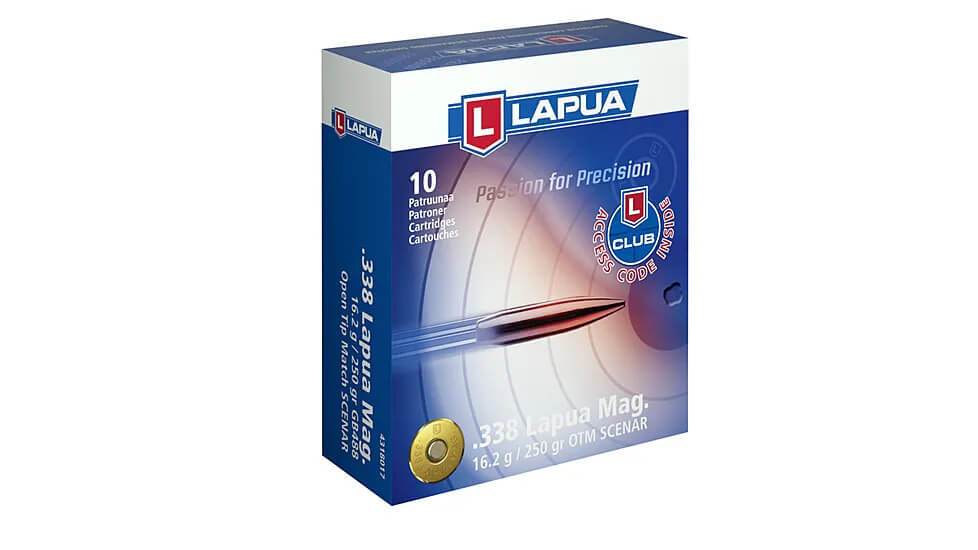
History: .338 Lapua comes to us in the ’80s as an extreme Long-Range rifle caliber intended to extend the snipers’ capabilities in desert and mountainous terrain. Prior to this round, there was no bridge between 7.62x51mm and .50 BMG. Snipers were forced to choose a limited-range bolt-action rifle or the completely overpowered M82/M107. This caliber filled a very necessary rule in the combat space. Today, this cartridge is in use globally by military/LE personnel, hunters, and LR shooting enthusiasts.
First Impressions: This round is a hammer and a scalpel. .338 Lapua Magnum offers very impressive external and terminal ballistic performance…but at a steep cost. For those lucky enough to be able to own and fire a .338 rifle, you know what I mean.
Muzzle Velocity: Firing a 250gr Lapua Scenar projectile, MV: 3,030 fps
Ballistic Coefficient: G1: 0.603 G7: 0.310
Energy: Muzzle: 5,096 ft-lbs. 500m: 2,755 ft-lbs. 1,000m: 1,345 ft-lbs. 1,500m: 610 ft-lbs.
Recoil: A line can be drawn in the sand between .30 cal class projectiles and .338 and larger. Without a muzzle brake or suppressor, .338 Lapua Magnum offers a challenging recoil experience. Much sharper and stronger than a .308 Winchester…not meant for beginners.
Ammo Availability: .338 Lapua is readily available online. The average price per round is $3.00-$4.25.
Barrel Life: Surprisingly due to the case volume to bore area ratio, barrel life is impressive for a cartridge of this size. Expect to see 2,500-3,000 rounds out of your barrel.
Bottom Line: Unless you are a military sniper, this round has almost zero practicality. But isn’t that what makes it awesome? The sheer muzzle energy from these bigger calibers is beyond impressive. However, for less bullet size, you can get a much better performing Long Range caliber… and for a lot less money too.
3. .300 Winchester Magnum
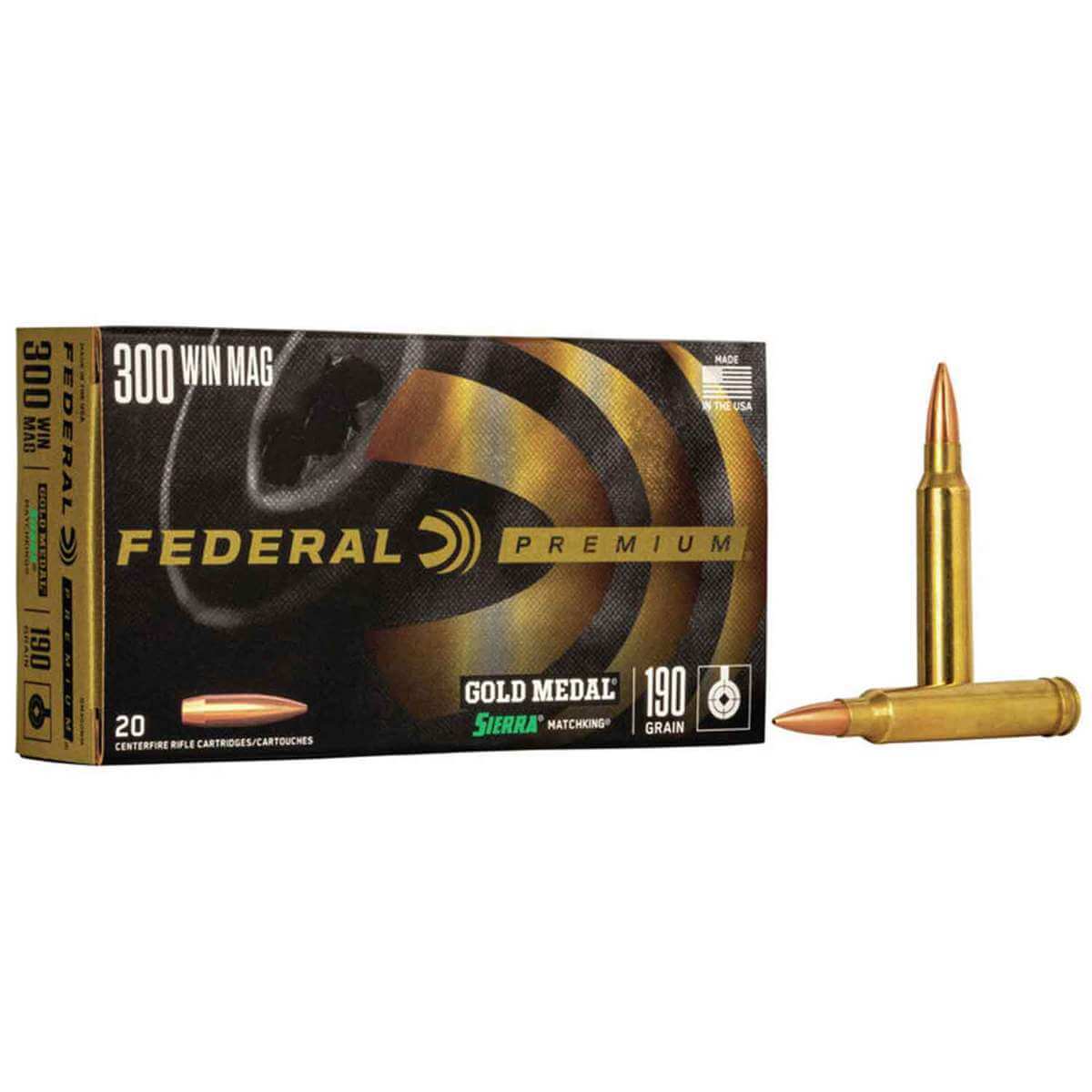
History: 300 Winchester Magnum was developed in 1963 by Winchester itself. The goal was to standardize a wildcat cartridge that married .338 Winchester Magnum and .375 H&H Magnum. Several other .30 cal magnum rounds were designed at the time, but .300 Winchester Magnum was the only one of the lot, to stand the test of time. To this day, .300WM is still a very popular choice amongst Long Range hunters and military snipers.
First Impressions: This cartridge will always hold a special place in my heart. With the right rifle, .300WM can be a very smooth shooting set-up. It hits hard and flies flat and straight. The downfall? Barrel life and ammo prices.
Muzzle Velocity: Federal Premium Gold Medal 190gr Sierra MatchKing MV: 3,150 fps
Ballistic Coefficient: Above bullet, G1: 0.539 G7: 0.276
Energy: Muzzle: 4,186 ft-lbs. 500m: 2,115 ft-lbs 1,000m: 937 ft-lbs. 1,500m: 426 ft-lbs.
Recoil: With a muzzle brake and/or suppressor, .300WM can feel similar to a .308 Winchester. Without one, this cartridge should be shot by older, more experienced firearm enthusiasts.
Ammo Availability: This cartridge has been around for a while. Ammo can be found at most sporting goods stores. The components for reloading are also readily available. The average price per round is $1.75.
Barrel Life: As with other magnum cartridges, the average barrel life is expected at 1,500-2,000 rounds.
Bottom Line: Similar to .300 WSM, this round excels at long range hunting. For average shooters wanting to plink at steel targets on their family farm, this round is far overkill. Greatly extended range external and terminal ballistic performance at the cost of barrel life.
4. .30-06 Springfield
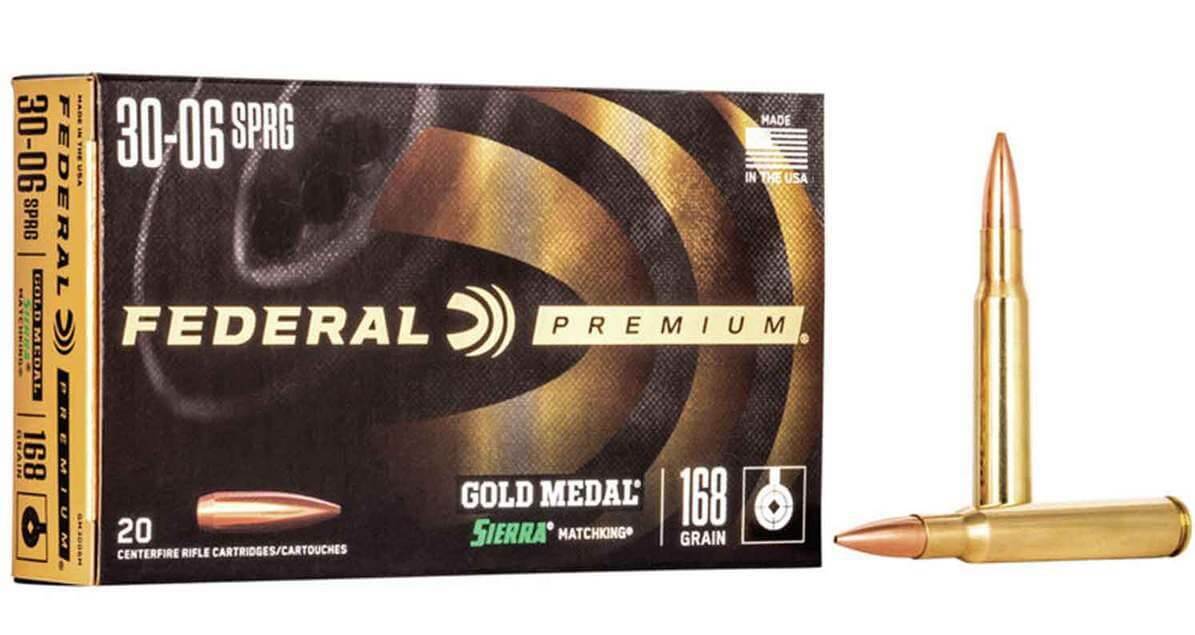
History: The Great Grandfather of them all, .30-06 (pronounced “thirty ought six”) is the oldest cartridge on this list. Why even mention such an antiquated round? .30-06 is such a classic sniper rifle round, I could not leave it out of the running.The name “.30-06” refers to the caliber, .30, and the year it was introduced by the US Army, 1906. It would serve as the main infantry cartridge for over 60 years, before being replaced by the 7.62x51mm NATO. This cartridge chambered three iconic US Service weapons; the 1903 Springfield rifle, M1 Garand, and the Browning Automatic Rifle (BAR).
First Impressions: Again, this round is such a classic. Many hunters still use this cartridge for its hard-hitting terminal performance and flat-flying exterior ballistics. Ultimately, we cannot deny that this round was replaced by better options. The cartridge was designed for reliable feeding in battle rifles, not efficient powder burns for consistent accuracy.
Muzzle Velocity: MV’s vary between 2,600 fps and 2,900 fps depending on projectile grain weight.
Ballistic Coefficient: Using Federal Premium 168gr Sierra MatchKing, G1: 0.463 G7: 0.224
Energy: Muzzle: 2,821 ft-lbs. 500m: 1,123 ft-lbs 1,000m: 394 ft-lbs. 1,500m: 264 ft-lbs
Recoil: With more case volume than a .308 and firing the same grain weight bullet, .30-06 will have more felt recoil than.308.
Ammo Availability: Like .308 Winchester, ammo availability and reloading components are everywhere. No issue finding it. The average price per round will be $1.25.
Barrel Life: Average barrel life is around 5,000 rounds.
Bottom Line: For the Long Range hunting community, I would argue that .30-06 still has a place in this world. With the projectile variability and network of knowledge on this cartridge, I think it’s a great option to build a classic hunting rifle, not to mention guys that still compete with and collect old military surplus rifles. I see .30-06 sticking around for a good while longer.
5. 6.5 Creedmoor
History: Created in 2007 by a ballistics team from Hornady, the 6.5 Creedmoor was designed as an improved Long Range target cartridge, based on .30 TC (Thompson Center). Since the beginning, the 6.5 has taken off as one of the best LR cartridges to date.
From PRS shooters to Long Range hunters, the Creedmoor has made a name for itself. Some could even say that this caliber has created quite a fanboy following. All in all, proven through years of ballistic testing, the 6.5 Creedmoor fills the gap between extended-Long Range performance and cost-effective and barrel-safe MV’s. This caliber has even won military contracts from SOCOM in 2017, which I specifically took part in. The numbers don’t lie.
First Impressions: Coming from my military background, I was always reluctant to stray from the 7.62x51mm or .300 Winchester Magnum. I was so familiar with how those rounds acted in high crosswinds and how they performed through Transonic.
But after finally diving into the 6.5, it’s clear why it has become so popular. It shoots far and flat, it doesn’t kick, and it doesn’t break the bank. Even better, this caliber has taken off so fast, nearly every manufacturer is making products to accommodate it.
Muzzle Velocity: Using Hornady 140gr ELD Match, 2,750 fps.
Ballistic Coefficient: 140gr ELD Match G1: 0.646 G7: 0.315
Energy: Muzzle: 2,401 ft-lbs 500m: 1,301 ft-lbs 1,000m: 633 ft-lbs 1,500m: 325 ft-lbs
Recoil: For being a long and hard-hitting round, 6.5 CM still maintains a lower felt recoil. The lighter 140gr range projectiles don’t enact enough felt energy rearward like the 175gr+ class of projectiles from bigger bores. Still less than the classic .308 Winchester.
Ammo Availability: Due to the popularity of the cartridge, 6.5CM ammo can be found almost anywhere. Also because of how popular and available it is, the 6.5 comes in around $0.75 to $1.25 per round, making it very affordable to shoot compared to other high-performing LR calibers. Projectiles can be found anywhere with nearly any grain-weight in its class, for those of you who reload.
Barrel Life: Because 6.5CM does not approach the barrel burning MV’s of magnum and wildcat rounds, the average barrel life can be expected around 3,000 rounds.
Bottom Line: Incredible mid to long-range performance. Comfortable price point. Easy and fun to shoot. Very modular across nearly any rifle system. What’s not to love? 6.5 Creedmoor has made a name for being one of the best overall performing and versatile calibers for the Long Range market. As for PRS shooters, with great flat trajectories and low-recoil, follow-up shots are a breeze.
For hunters, the retained energy, MV, and increased projectile expansion technology, 6.5CM makes for a great terminally performing round for medium and even large games. 6.5 has even made its way into the SOCOM sniper community. Definitely a great overall cartridge for any skill range in the Long Range shooting community.
6. .308 Winchester/7.62x51mm NATO
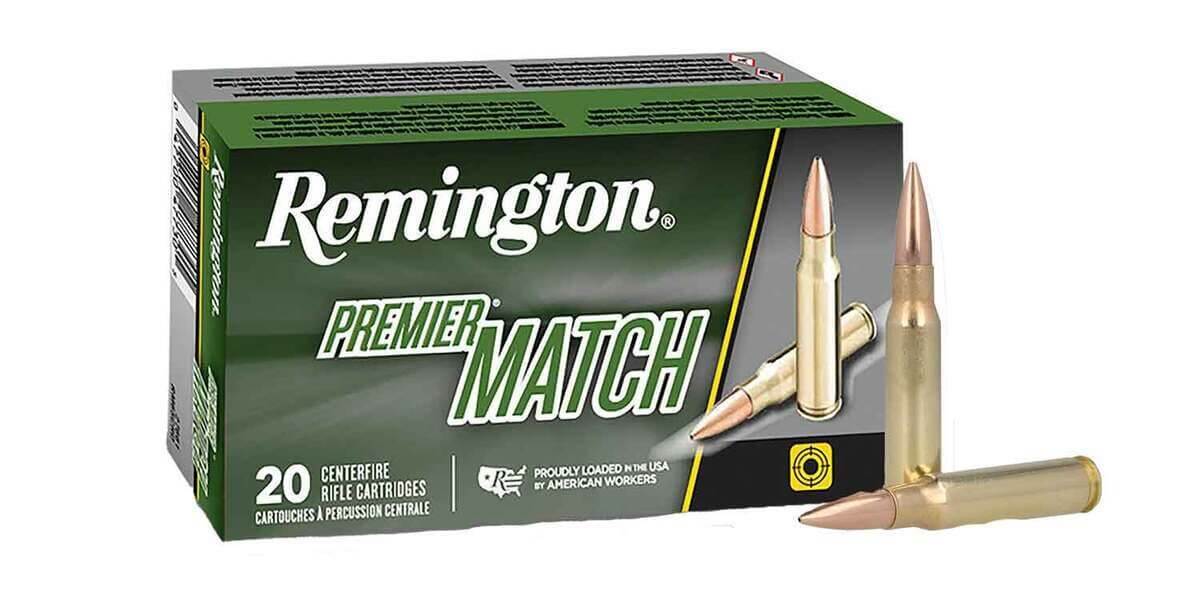
History: The history and service record behind .308 goes all the way back to the 1950s. The military changed its need for .30-06 as its primary infantry weapon cartridge. The new case was developed for years based on the T65 developmental cartridge. With help from the civilian market led by Winchester, .308 took the world by storm.
The designation of 7.62x51mm points to the military brother of .308 Winchester. Although the two cartridges have very small differences, SAAMI (Sporting Arms and Ammunitions Manufacturers Institute) maintains it is safe to interchange the two rounds. To this day, the 7.62x51mm still has a place in the modern military sniper community. The newest variants of all service sniper rifles have options chambered in the classic Long Range caliber.
First Impressions: A good judge of the success of a caliber is how long it has been relevant. Since its inception, .308 has remained the most popular choice of Long Range shooters, snipers, and hunters. You cannot pick a better round for the beginner Long Range shooter. The number of options for load development and rifle rigs is unsurpassed. You dream it, and it can be done.
Muzzle Velocity: One of the classic LR projectiles is the 175 Sierra Match King @ 2,700 fps
Ballistic Coefficient: 175gr SMK G1: 0.474 G7: 0.243
Energy: Muzzle: 2,832 ft-lbs. 500m: 1,212 ft-lbs. 1,000m: 437 ft-lbs. 1,500m: 295 ft-lbs.
Recoil: Shooting any of these calibers across any number of platforms will show that each round feels differently depending on the set-up. .308 is no different. An AR-10 firing with a suppressor, .308 will recoil slightly more than an AR-15. With a pencil barrel and lightweight wooden stock, .308 can feel pretty sharp. All in all, .308 is certainly manageable by shooters of most ages.
Ammo Availability: Again, being one of the forefathers of the Long Range shooting community, .308 is found everywhere. Reloading components can be found nearly anywhere. This caliber is one of the most popular and widely used centerfire cartridges in the world. Average price per round…$1.00.
Barrel Life: Because projectile options can range anywhere from 120gr to 230gr, projectile weights and MV’s vary greatly. This also means barrel life will vary greatly. You can expect an average of 4,000 to 10,000 rounds of sustained accuracy.
Bottom Line: I argue that you will not find a more practical Long Range caliber in this list. Due to its age and relevance today, .308 has proven itself for over 65 years! Military sniper rifles are still utilizing this classic cartridge. You will get more bang for your buck by choosing .308 Winchester as your next Long Range caliber. It’s not the fastest, farthest, or most accurate round, but it will certainly get the job done with less headache and wallet-ache.
7. .300 Norma Magnum
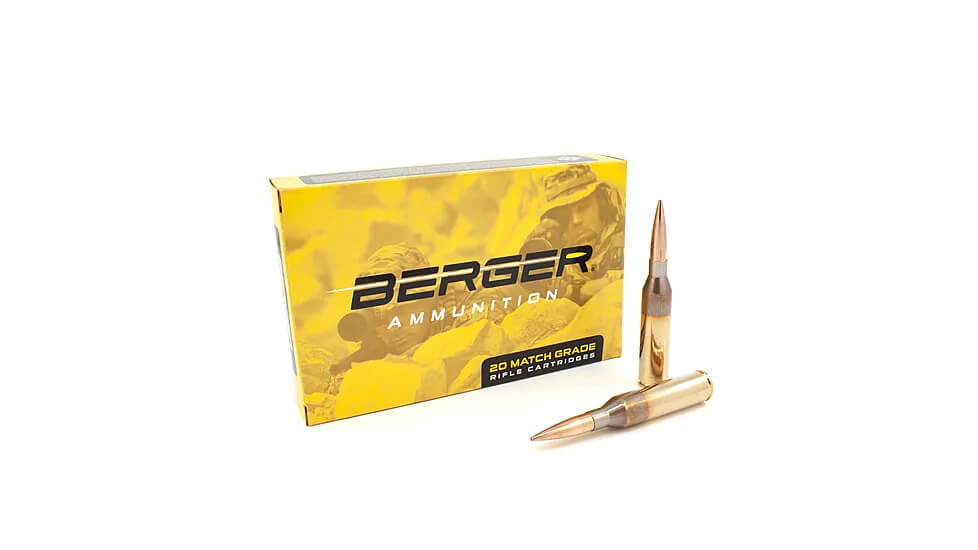
History: .300 Norma Magnum comes to us from .338 Norma Magnum, necked down to accept a .30 cal projectile. The Long Range community has been pushing the envelope more and more. Today’s magnum cartridges show us the performance that could only exist in science fiction, 20 years ago. Both SOCOM (Special Operations Command) and the US Army have selected .300 Norma Magnum as their hottest and newest sniper rifle cartridge.
First Impressions: The first time I fired .300NM I was blown away. Take .308 Winchester at 500 for comparison, The level of confidence of a first-round hit at that range is extremely high. When firing with .300NM at 1,000m, you get that same feeling. You have so much faith that your round will hit your target. This cartridge is one of the most capable rounds I have ever shot.
Muzzle Velocity: Using the US Military’s XM1163, MV: 2,940 fps
Ballistic Coefficient: 230gr Berger Hybrid OTM Tactical G1: 0.717 G7: 0.368
Energy: Muzzle: 4,414 ft-lbs. 500m: 2,621 ft-lbs. 1,000m: 1,451 ft-lbs 1,500m: 722 ft-lbs
Recoil: Pairing a suppressor with .300 Norma Magnum, the recoil isn’t all that bad. I had no issue staying on target for a follow-up shot. Slightly more than .308 Winchester.
Ammo Availability: The average price per round is $4.75. You can readily find these rounds online.
Barrel Life: Sadly, a .300 NM barrel will only live to 1,200-1,500 rounds.
Bottom Line: If you had the money to spend on it, and were not needing a semi-auto rifle for competitions, .300 Norma Magnum is possibly the best-performing round on this list. The numbers are beyond impressive. Shooting this round in the real world is even more impressive.
8. 6mm Creedmoor
History: 6mm Creedmoor can obviously be related to its slightly bigger brother; the 6.5CM. A column writer for Outdoor Life wanted to do a piece on how to design a wildcat cartridge. His favorite caliber at the time for LR competition shooting was the 6.5CM. He took that case and necked it down to load .243 (6mm) projectiles. He wanted an even lighter recoiling cartridge with the same performance, so 6mm Creedmoor was born. The caliber took the LR community by storm. Early pioneers were Ruger, GA Precision, Hornady, and Savage.
First Impressions: Just like any new and exciting caliber that is designed specifically for the LR community, I know the performance will be top-notch. 6mmCM excels in the PRS community and even long-range hunting. I am interested to see how the price of such systems will come down and become more readily available to entry to novice-level LR shooters. I like that the caliber is being offered in high-end AR-10 platforms for gas-gun enthusiasts.
Muzzle Velocity: A standard projectile weight for optimum performance out of the 6CM would be a 105-grain Berger Target VLD @ 3,100fps.
Ballistic Coefficient: 105 grain Berger VLD G1: 0.517 G7: 0.265
Energy: Muzzle: 2,240 ft-lbs 500m: 1,091 ft-lbs 1,000m: 457 ft-lbs 1,500m: 221 ft-lbs
Recoil: Very similar to .243 Winchester. However, with 6CM being available in more modern builds, devices like muzzle brakes and suppressors (that are not found on most .243 rifles), will make for an even more pleasant recoil experience from 6CM.
Ammo Availability: As to be expected, 6mm Creedmoor is still a young cartridge. Being developed in 2017, most ammo is going to come from reloading. That being said, there are plenty of commercial options, but the price will be much higher than standard cartridges. The average price per round will be close to $2.00.
Barrel Life: Again, as with most wildcat rounds, barrel life will not be great. You are looking at the 1,500 to 2,000 round mark for consistent accuracy. All 6mm projectiles are notorious for extremely fast throat erosion.
Bottom Line: With things like barrel life and ammo availability into consideration, 6mm Creedmoor is a perfect option for the more seasoned and able LR shooter who doesn’t mind reloading consistently and replacing barrels often. Most off-the-shelf set-ups are going to be on the high end of the market so 6mm CM is not ideal for a beginner shooter. Long-range performance is very impressive. I just want to see more of the market available to 6CM.
9. 7mm Precision Rifle Cartridge (PRC)
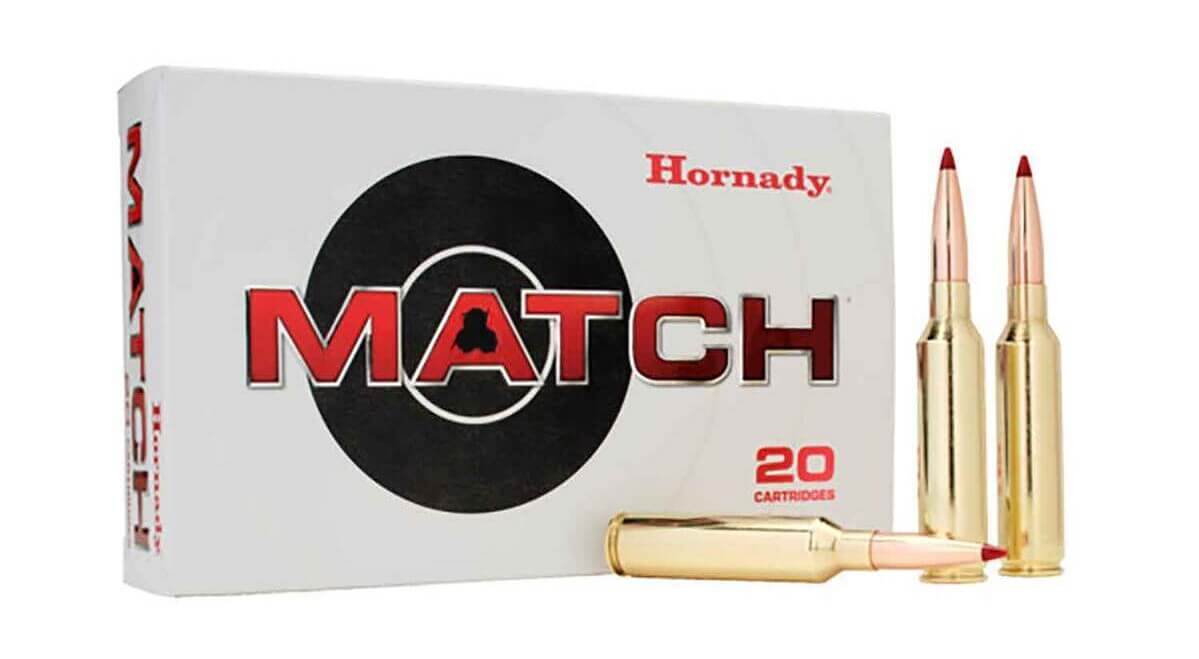
History: 7mm PRC was introduced by Hornady in 2018, making it a relative newcomer to the field. This powerful long-range cartridge is a necked-down version of .375 Ruger. Hornady designed 7mm PRC in response to the growing demand for precision target shooting and long-range hunting rounds. By necking the larger case down, Hornady was able to combine .375 Ruger’s larger powder capacity with the more streamlined and aerodynamic 7mm projectile. This resulted in a cartridge ideal for long-range performance.
First Impressions: Like most of the shooting community, I loved 7mm PRC from the moment I first got my hands on it. This round has an impressive ability to maintain muzzle velocity, energy, and trajectory, even at pretty extreme ranges. As the name indicates, 7mm PRC is popular among the precision rifle shooting community, and long-range hunters have hopped on board the 7mm PRC train too.
Muzzle Velocity: Using Hornady 7mm PRC 180 gr ELD Match, you can expect a muzzle velocity up to 2975 FPS.
Ballistic Coefficient: 180 gr ELD Match G1: .796, G7: .401
Energy: Muzzle: 3439 ft-lbs, 500m: 2253 ft-lbs, 1,000m: 1,800 ft-lbs, 1,500m: 1,300 ft-lbs
Recoil: Another perk of 7mm PRC is that it has pretty manageable recoil, especially compared to other magnum calibers with similar performance. Sure, you should expect a kick, but it should be perfectly tolerable for most experienced shooters.
Ammo Availability: Since it’s still a new kid on the block, 7mm PRC ammo is still a little hard to track down in stores. With that said, it’s not too hard to track down online, where you can expect to pay about $2.75 a round.
Barrel Life: Again, 7mm is still fairly new and reports vary quite a bit, but generally speaking, you can expect a lifetime of at least 1,500 rounds.
Bottom Line: 7mm offers excellent long-range ballistic performance for both hunting and precision target shooting. Shooters looking for a round that manages to balance both relatively manageable recoil with impressive power will enjoy 7mm PRC. Just remember that because it’s so new, it won’t have the widespread availability of other more established rounds.
10. .260 Remington
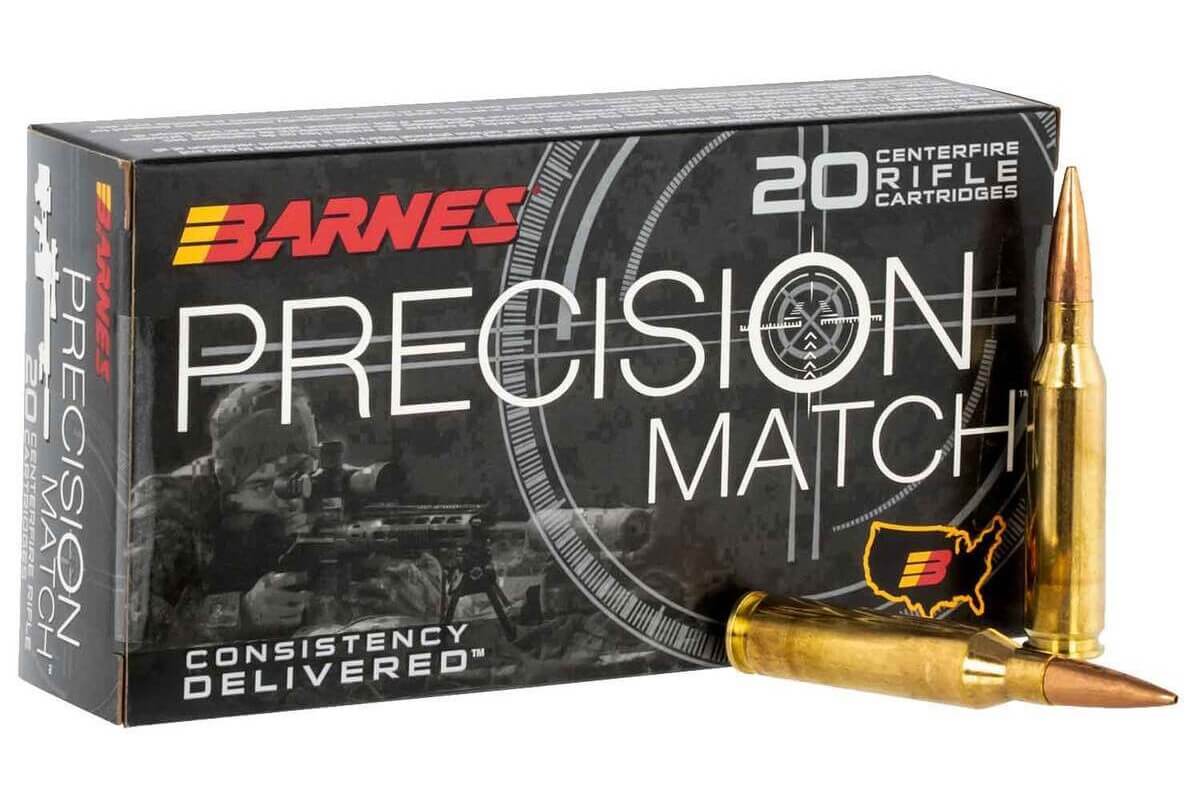
History: While 6.5mm (0.264) projectile was incredibly popular in Europe, the US in the late ’90s was still stuck on the .30 caliber range. That changed in 1997 when Remington standardized many 6.5 wildcats based on .308 Winchester.
Remington simply took .308 case and necked it down to house 6.5mm. The final result was a flat shooting 6.5 projectile that flew like a .300 Winchester Magnum but with less recoil than a .308. Like many standardized wildcat rounds, this cartridge excelled in bench rest, long-range medium game hunting, and steel target shoots. .260 Remington sparked quite the interest in the North American market of the 6.5mm cartridges.
First Impressions: I’ve always liked .260. 6.5 projectiles hold a reputation of great BC’s. .308 Win case has a nice even powder burn and has readily available brass for reloading. Put the two together and you have a great shooting LR round. With low recoil and flat trajectories, .260 is another great option for someone interested in Long Range shooting.
Muzzle Velocity: Again for the best LR option, 140gr Precision Match MV: 2,780 fps
Ballistic Coefficient: Using the above projectile, G1: 0.607 G7: 0.311
Energy: Muzzle: 2402 ft-lbs. 500m: 1260 ft-lbs. 1,000m: 585 ft-lbs. 1,500m: 306 ft-lbs.
Recoil: This round is special just like the other 6.5mm projectiles in its class. You get excellent Long Range performance, with recoil slightly less than .308 Winchester.
Ammo Availability: During its launch in 1997, .260 was still on par with other wildcats. The big advantage and why .260 became so popular was that it could easily be necked up or down by using other standard rifle cartridges, making reloading a breeze. And since it uses the ever-popular 6.5 projectiles, components are relatively cheap. .260 also made a name in the hunting community as well, so finding it on the shelves is no problem. The average cost per round of .260 Remington online will be around $1.70.
Barrel Life: Since .260 is not firing heavy bullets over 2,900 fps, the barrel life can be similar to other 6.5mm cartridges in its class…about 2,500-3,500 rounds.
Bottom Line: .260 isn’t too informationally unavailable to offer a great learning caliber to the average new shooter. The top-end stuff certainly has its gatekeepers. What do I mean by that? A lot of the newer, ultra-flat cartridges take a good deal of reloading knowledge to successfully harness their ability.
Most of these calibers are also fairly expensive to shoot in both ammo and barrel replacements. The learning and spending curve is steep in the LR community, especially in the top tier. That’s what makes older cartridges like .260 great. Tons of different build options exist and the knowledge pool to learn from is immense. Low recoil, combined with the above mentions makes .260 another great round to start the LR game.
11. .28 Nosler
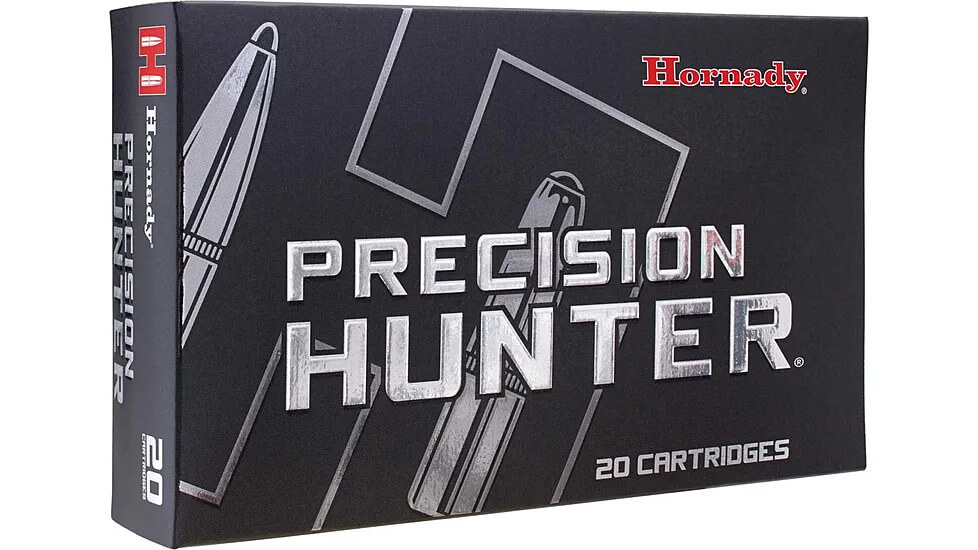
History: Just introduced in 2015, .28 Nosler is one of the newest rounds on this list. As you can probably guess from the name, .28 Nosler was developed by Nosler, who was looking to create a new long-range round that would deliver excellent accuracy. It’s based on .404 Jeffrey but, like a lot of long range precision rounds, is necked down, this time for .284 bullets.
First Impressions: .28 Nosler delivers super magnum performance from a standard length, beltless cartridge. It’s pretty awesome. And what’s even more awesome, it accomplishes that with what’s honestly pretty light recoil, at least relative to other rounds that deliver magnum performance.
Muzzle Velocity: Hornady 28 Nosler 162 ELD-X Precision Hunter has a muzzle velocity of 3175 FPS.
Ballistic Coefficient: Still using the Hornady, G1: .631, G7: .318
Energy: Muzzle: 3626 ft-lbs, 500m: 261.83 ft-lbs, 1,000m: 209.47 ft-lbs. 1,500m: 172.59 ft-lbs
Recoil: .28 Nosler’s recoil is pretty moderate, especially for its level of power. It’s certainly manageable for most shooters, and experienced shooters shouldn’t have any problems, even over extended range sessions.
Ammo Availability: .28 Nosler is a newer and less common caliber, so its availability isn’t nearly that of older, more established rounds. However, it can still be tracked down online with relative ease, and as it gets more and more popular, you should have an easier time finding it at brick and mortar shops too. Hopefully more popularity will also lead the price to drop, since it currently hovers at about $5.60 per round.
Barrel Life: The high power of .28 Nosler makes it notoriously rough on barrels. Based on estimates I found online, you can expect your barrel to last about 500 rounds before it needs replacing.
Bottom Line: .28 Nosler offers a compelling combination of high muzzle velocity, excellent ballistic coefficient, and manageable recoil, making it an attractive choice for long-range precision shooting and hunting. Sportsmen seeking powerful, precise, and potent long-range capabilities will love .28 Nosler. While it may not have the same extensive availability as more established calibers and will require more frequent barrel replacement, .28 Nosler’s performance certainly makes it worth the extra effort to track down for its excellent accuracy and power at extended ranges.
12. .300 WSM (Winchester Short Magnum)
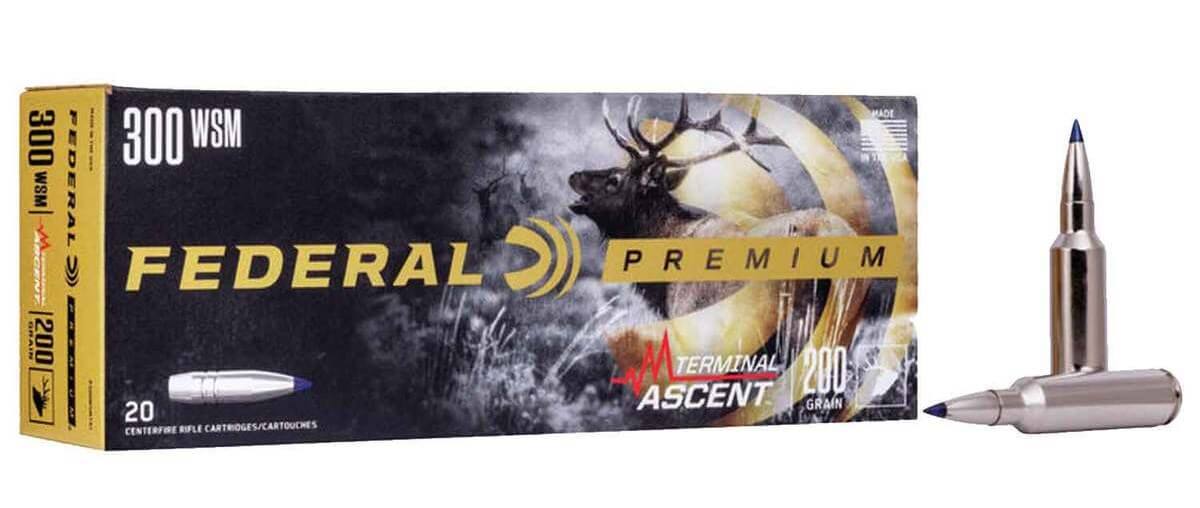
History: Winchester designed .300 WSM in 2001 with the idea of a hybrid. They wanted a superior hunting and LR cartridge with similar trajectories to .300 WM but with less powder use and recoil. .300 WSM steals the performance of a .300 WM and transforms it down to a short-action rifle.
First Impressions: I like the idea of basically a short-action .300 Win Mag. It makes sense. No one can deny how terrific a .300 WM performs at extended range. For the hunters in mind, the ability to take a .30 caliber projectile (which has superior terminal performance to the smaller 6.5mm projectiles) and flatten its trajectory to achieve those longer shots in higher winds is crucial. I see this more for the shooter that needs terminal performance.
Muzzle Velocity: Federal Premium 200gr Terminal Ascent @ 3,200 fps
Ballistic Coefficient: G1: 0.515 G7: 0.264
Energy: Muzzle: 3,819 ft-lbs. 500m: 1,866 ft-lbs. 1,000m: 786 ft-lbs. 1,500m: 362 ft-lbs.
Recoil: When dealing with magnum calibers, recoil is going to be noticeably more than .308 Winchester. With less powder capacity than a .300 WM, the WSM is still manageable.
Ammo Availability: One of the biggest drawbacks of this round is that ammunition is not readily available and it’s expensive. The average price per round will be around $2.00.
Barrel Life: You can expect roughly 1,500 rounds.
Bottom Line: For the experienced Long Range hunter, I think this is a great caliber to consider. Its LR performance and retained energy will be a great option for taking down the larger games at a distance. For someone considering PRS matches, this rifle is not for you.
13. .224 Valkyrie

History: .224 Valkyrie was the child of an experiment by Federal in 2017 to reach into the 1,000-yard competition circuit (which was dominated by .30 caliber class cartridges) with a small .22 caliber projectile. In order to do so, their already proven case, the 6.8 SPC (Special Purpose Cartridge) was necked down to fit a .22 caliber projectile. This basically means the opening of the case where the bullet is seated, is tightened from 6.8mm to 5.7mm. That one-millimeter difference means a large increase in MV.
First Impressions: This cartridge is an interesting case of innovation to solve a fairly difficult problem. Before its inception, the thought of pushing a 75-grain projectile past 1000 yards was uncommon. Because .224 is so new, the market is still catching on. Not many production rifles exist in a budget option. Especially in the bolt action realm.
I think this cartridge will prove useful to the long-range community in the future. One big drawback to the Valkyrie is the same as the .223. The projectiles don’t carry a lot of mass, therefore their stopping power is limited. For hunters, medium-game will be the limit of this caliber.
Muzzle Velocity: MV values for .224 vary from 2,700 fps (90-grain projectiles) to 3,400 fps (60-grain projectiles).
Ballistic Coefficient: One excellent round designed specifically for long-range shooting is 90-grain Sierra Match King. G1 BC: .563 G7 BC: .274.
Energy: Muzzle: 1,456 ft-lbs 500m: 660 ft-lbs 1000m: 248 ft-lbs 1500m: 162 ft-lbs
Recoil: Minimal. Many shooters claim .224 has about half of the felt recoil as a .308.
Ammo Availability: Several factory loads do exist on the market today. Barnes, Hornady, Federal, and Berger all make loads ranging from $0.60-$1.30 per round. Those of you who reload can stretch the Valkyrie by playing with different powders, bullet seating depths, and projectile types.
Barrel Life: Finding barrel life data can be tricky, especially for a round that has only been alive for 3 years. From what can be expected, .224 wears a little bit more than .223, approx. 80% more.
Bottom Line: .224 Valkyrie takes the benefits from .223 and extends its range performance drastically. Any shooter of any age can comfortably shoot the Valkyrie without feeling recoil fatigue. It has been a proven competitor in the PRS circuit. However, I can’t jump fully on board until more bolt-action options are available. I do believe the market will catch up to this round.
Also Read: 7 Best .30-06 rifle
14. .50 BMG (Browning Machine Gun)
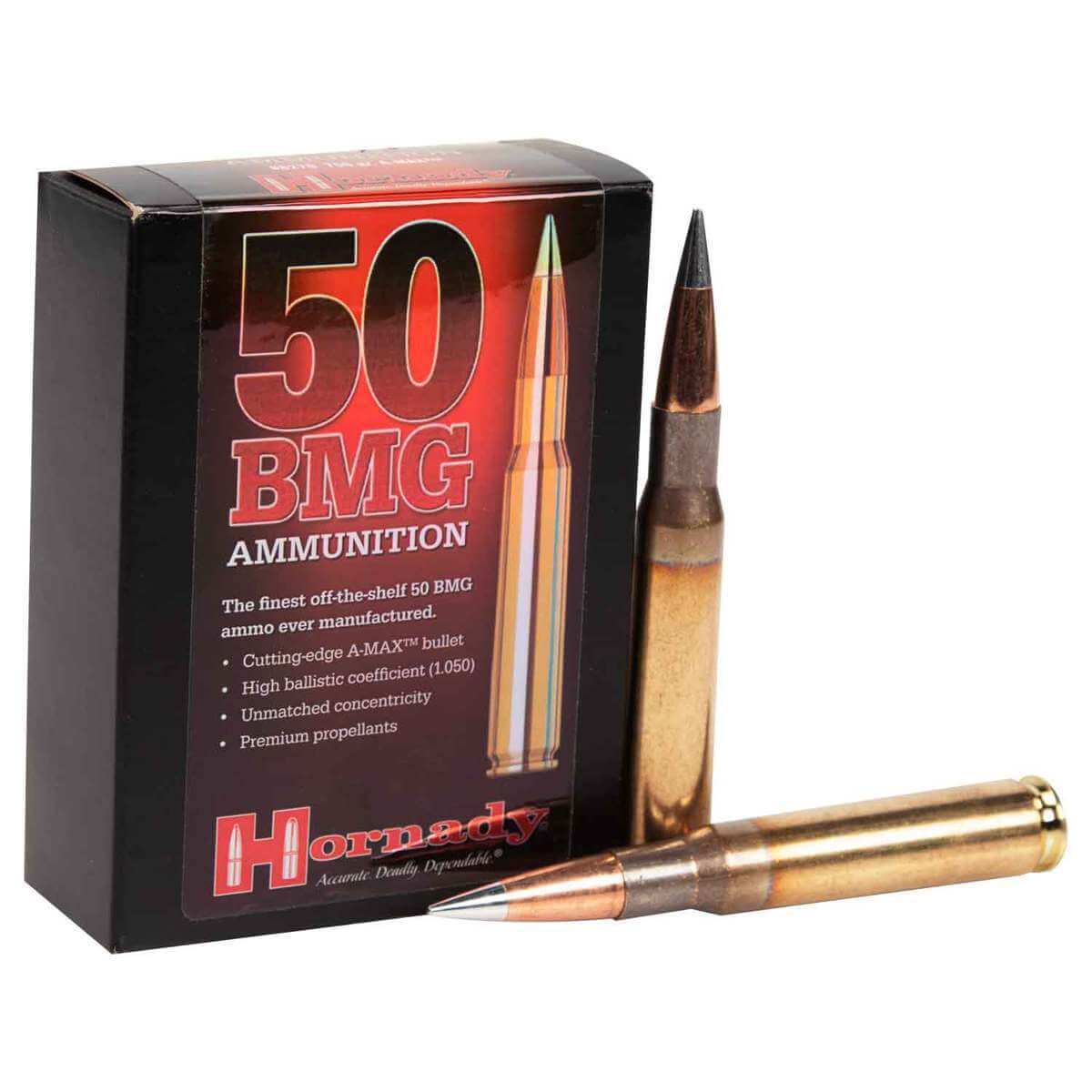
History: Ah, .50 BMG. This hefty guy is an older round, developed in the early 20th century by the legendary John Browning. Browning created .50 BMG during World War I for use with his M2 Browning machine gun. Specifically, it was designed for anti-aircraft and anti-vehicle purposes, but its excellent long-range ballistics have made it popular for long-range shooting as well, especially for extreme ranges.
First Impressions: The first time you handle .50 BMG is at least awe-inspiring and possibly overwhelming. And no wonder, it’s been associated with heavy machine guns and military might for a long time. This thing is big and it’s powerful. If you can handle it, the long-range ballistic performance is impressive, to say the least. However, the heavy recoil can be a lot to handle, especially for less experienced shooters.
Muzzle Velocity: .50 BMG typically achieves muzzle velocities around 2,800 to 3,000 feet per second. Hornady Match 50 BMG 750gr A-Max Rifle Ammo, for example, has a muzzle velocity of 984.25 FPS.
Ballistic Coefficient: 1.050 (G1)
Energy: Muzzle: 1613.05 ft-lbs, 500m: 1346.79 ft-lbs, 1,000m: 1164.61 ft-lbs, 1,500m: 1030.37 ft-lbs
Recoil: You should expect very heavy recoil with with this round, which is part of the fun. It’s definitely not for beginners though.
Ammo Availability: While not as readily available as more common calibers, .50 BMG ammunition still isn’t too hard to track down, especially at online retailers. Price can vary widely though. Depending on quality, manufacturer, and quantity, you’re looking at anywhere from $3 to $9 per round.
Barrel Life: .50 BMG is known to be a barrel burner, but you should still expect at least around 1500 rounds before noticeable differences in accuracy.
Bottom Line: .50 BMG is a classic and a lot of fun to shoot. If you’re looking for something with a hell of a kick, you can’t go wrong here. However, its intense power is really overkill for most civilians’ practical purposes, and its age shows in its accuracy. If you’re looking for a long-range hunting or precision shooting round, you’ll want to opt for another option on this list.
15. 6.5-284 Norma
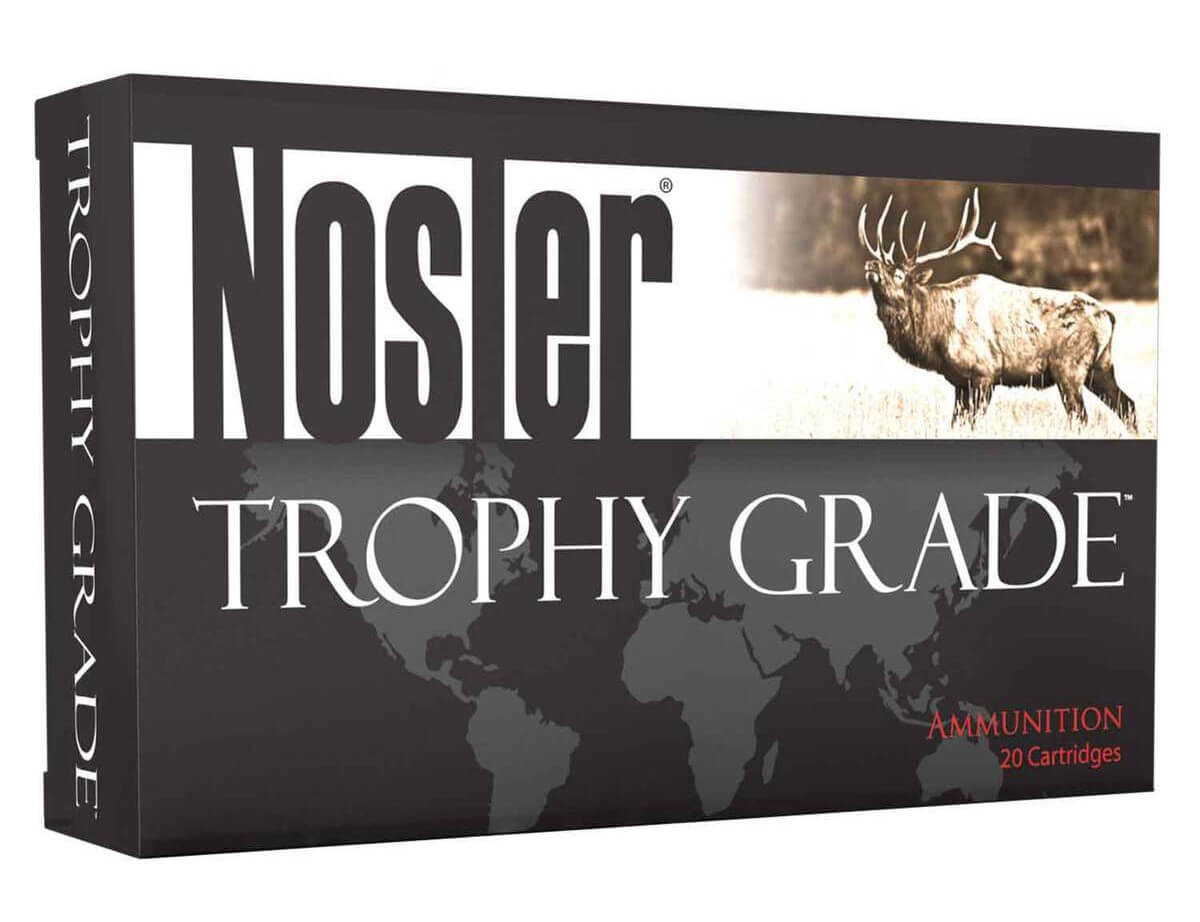
History: 6.5-284 Norma got its start in the late 1990s in Sweden. It was born as a wildcat cartridge, based on the .284 Winchester case necked down to accept 6.5mm (.264 caliber) bullets. Recognizing its potential, Norma, a Swedish ammunition manufacturer, adopted and standardized the cartridge as the 6.5-284 Norma, making it commercially available.
First Impressions: I like 6.5-284 Norma a lot. When I first got my hands on it, one of the very first things I noticed was its exceptional accuracy. I was able to repeatedly get consistent, tight groupings without any problem. The other major thing I noticed is how flat the trajectory is. The high muzzle velocity and sleek 6.5mm bullets allow rounds to travel long distances with minimal bullet drop.
Muzzle Velocity: Nosler 130gr Accubond Trophy Grade Ammunition: 2709 FPS
Ballistic Coefficient: G1: 0.488
Energy: Muzzle: 2118.28 ft-lbs, 500m: 930.80 ft-lbs, 1,000m: 387.96 ft-lbs, 1,500m: 237.49 ft-lbs
Recoil: 6.5-284 Norma generates moderate recoil, making it manageable for most shooters and particularly well-suited for those who prefer calibers with less punishing kick for extended range sessions. New shooters will quickly adapt to it, and more experienced shooters should have no problem at all.
Ammo Availability: As a wildcat cartridge, obviously 6.5-284 Norma was hard to get your hands on for a while if you weren’t willing to make your own. Now that it’s standardized, however, this round’s availability has improved over time. You can expect to pay around $5 to $6 per round for mid-level quality ammo when buying in bulk.
Barrel Life: 6.5-284 Norma has moderate barrel wear compared to other high-velocity cartridges. Shooters can expect to get around 1,000 rounds fired off before needing to replace the barrel.
Bottom Line: 6.5-284 Norma is a versatile, well-loved cartridge thanks to its first-class long-range performance and accuracy. It’s very accurate and consistent, with a nice balance of bullet diameter, muzzle velocity, and ballistic performance. Its manageable recoil, wide availability, and reasonable barrel life make it a great choice for shooters trying to extend their ranges.
16. 6.5x47mm Lapua
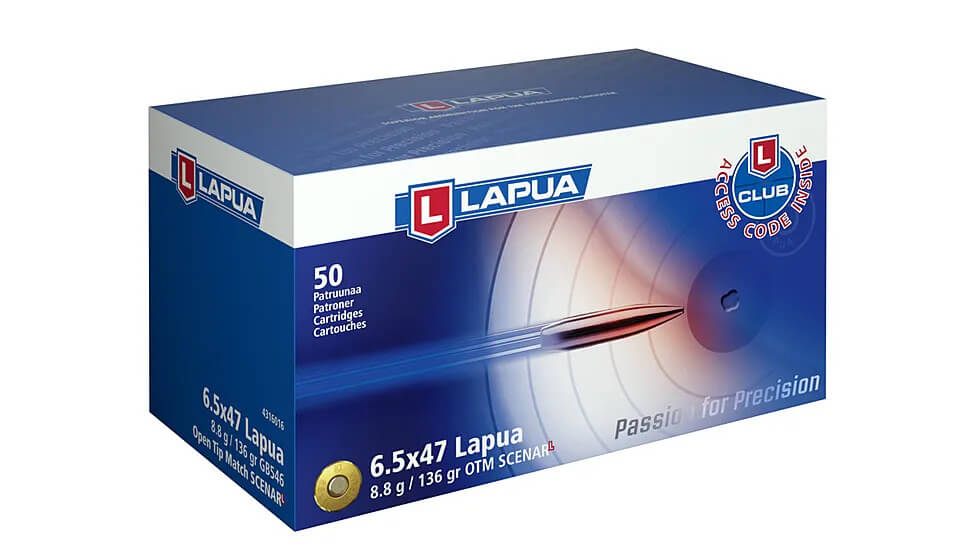
History: This is another European round, this time from Finland. 6.5x47mm Lapua was introduced in 2005 and was specifically designed by Lapua for competitive shooting, particularly long-range and precision rifle disciplines. Like a lot of long range and precision rifle cartridges, 6.5x47mm Lapua is a necked down version of a previous round—in this case .222 Remington magnum—which allows it to take advantage of the larger powder capacity of the older round while also getting the benefits of a more aerodynamic projectile.
First Impressions: In my opinion, 6.5x47mm Lapua is a fun round to shoot, and other shooters seem to agree; this cartridge is known for its exceptional accuracy and consistency. 6.5x47mm Lapua’s reputation as a precise and low-recoil caliber makes it popular among both competitive and recreation precision rifle shooters.
Muzzle Velocity: Lapua Scenar-L OTM 136 Grain: 2625 FPS
Ballistic Coefficient: G1: 0.545, G7: 0.274
Energy: Muzzle: 2080.66 ft-lbs, 500m: 992.76 ft-lbs, 1,000m: 446.96 ft-lbs, 1,500m: 270.69 ft-lbs
Recoil: 6.5x47mm Lapua generates minimal recoil, making it pleasant to shoot and allowing for rapid follow-up shots. The low recoil is an advantage in precision shooting, helping maintain sight picture and shooter comfort during extended range sessions.
Ammo Availability: When it was first released, this round was a little hard to track down, but fortunately availability of 6.5x47mm Lapua ammo has improved over time, thanks to its popularity in precision shooting circles. While it may not be as common as more mainstream calibers, it is reasonably accessible, especially online, for around $6 to $8 per round.
Barrel Life: 6.5x47mm Lapua is very barrel-friendly. It’s well-known for its excellent barrel life, capable of maintaining accuracy and consistency for at least 2000 rounds before you’ll need to swap out the barrel.
Bottom Line: 6.5x47mm Lapua is a superb precision rifle cartridge, known for its accuracy, low recoil, and excellent barrel life. It’s not as powerful as some of the other cartridges we’ve recommended here, so if you’re looking for a hunting round, you’re best reserving this one for medium-range or else looking at another option. However, with consistent velocity, a flat trajectory, and overall great ballistic performance, it’s excellent for long-range precision target shooting, especially for long shooting sessions thanks to its mild recoil.
17. .300 Precision Rifle Cartridge (PRC)
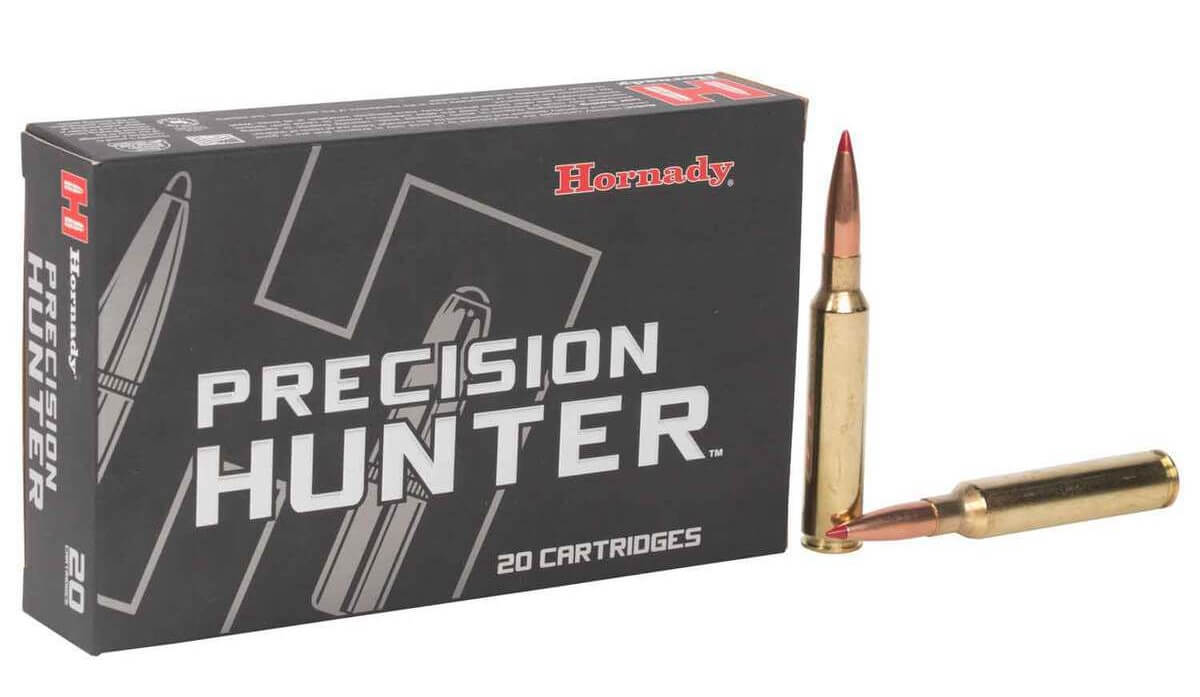
History: .300 PRC’s origin story is quite similar to that of 7mm PRC. This round was introduced by Hornady in 2018, specifically to meet the growing demand for high-performance long-range shooting and hunting calibers. Hornady wanted to create a cartridge that combined flat trajectory, consistent accuracy, and excellent ballistic performance. They used 6.5mm Creedmoor as the parent case, but instead of necking down like 7mm PRC, they actually sized the case up to accept .30 cal bullets. Also like 7mm PRC, .300 PRC was an immediate success, quickly gaining popularity among competitive shooters and long-range big game hunters alike.
First Impressions: After hearing about other people’s great experiences and having already given 7mm PRC a shot, I was very excited to give .300 PRC a try. One of the first things that caught my attention was the impressive energy delivery. While a lot of rounds can reach long distances, many of them lack the necessary “oomph” for an ethical kill at long ranges, especially for big game. That’s not a problem with .300 PRC. And despite that power, recoil isn’t too bad either.
Muzzle Velocity: 212 gr ELD-X Precision Hunter: 2860 FPS
Ballistic Coefficient: G1: .663, G7: .334
Energy: Muzzle: 455.81 ft-lbs, 500m: 347.39 ft-lbs, 1,000m: 280.27 ft-lbs, 1,500m: 233.07 ft-lbs
Recoil: .300 PRC delivers stronger recoil than most smaller calibers, but still only a moderate level. Experienced shooters should have no problem managing it, even over extended shooting sessions. Newer shooters should be able to acclimate with a little bit of practice.
Ammo Availability: Like 7mm PRC, since .300 PRC is still pretty new, ammo isn’t as easy to come by as older, more well-established calibers, particularly in brick and mortar stores. Still, it’s pretty easy to source online and the gun selection is growing fast. And also like 7mm PRC, .300 PRC is a great round, so I’m confident the selection and availability will only continue to grow. .300 PRC can be picked up for around $2 to $5 per round.
Barrel Life: .300 PRC has a fairly moderate barrel life, similar to that of other high-velocity magnum cartridges. With proper maintenance and good quality ammunition, you can typically expect about 1200 to 1500 rounds between barrel replacements.
Bottom Line: If you’re looking for a cartridge that offers both excellent long-range accuracy and sufficient hunting power, this is a great option. Long-range big game hunters will love it. It’s also great for long range target shooting, though some shooters may prefer to opt for a lighter recoiling round. Still, the recoil is far from unmanageable for experienced shooters if you’re looking for a round that can do both.
The Verdict: If you put a gun to my head, the 6.5mm Creedmoor is the best, overall, Long Range caliber. That is an on-the-spot selection. After writing each of these parameters and reviewing each caliber, I could think of around much better suited than the 6.5 CM in a given category…but it excels in almost every category. It is a product of natural selection and evolution…the best features of several classic LR rounds fused into one. Is it the fastest? No. Does it go the farthest? No. Is it the most accurate? (Well that largely depends on the shooter).
However, most off-the-shelf Long Range rifle manufacturers are chambering their flagship rifles in 6.5 Creedmoor (and for less than $1,200). Not to mention the custom actions and several Tier One barrel manufacturers available to create your own custom rifle. If you take away anything from this article, no matter which caliber you choose, make sure you know how to operate that rifle. Invest the money and invest the time in solid training from reputable sources. You’ve already come here, which shows you are willing to read. Do your homework. And most of all, be safe and be fun.

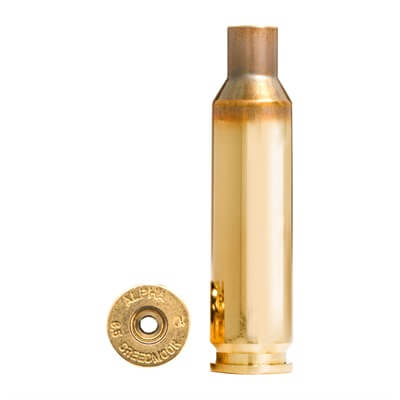

Very nice article. The history lesson was GREAT! MY DAD raised me on 30-06, and I have a hard time looking elsewhere. Buying my first 308 soon… in AR… a first as well…a double adventure! I’m too old and worn out for the magnums. Might try that 6.5 Creedmoor as well. Thank you for your service.
You have more knowledge in your non-dominant pinky than I have. This is one of the most informative articles I have read on calibers. The info on barrel life added a lot of depth. I liked that you started at 5.56 for a base caliber. Why not mention the 7mm Remington Mag? Also, no mention of the .375 & .408 Chey Tac, the 416 Barrett, and of course the .50 BMG. Could you make a brief mention of these calibers and perhaps another that could be added? I think the .375 & .408 Chey Tac and 416 Barrett suffer from ammo cost and availability? Of the large calibers is the 50 BMG the best choice based on ammo cost and availability vs the Chey Tac’s and Barrett. In your opinion is the 6.5 Creedmoor going to eventually put out to pasture the 30-06 and the .308?
Great article, bringing in all the relevant points. I ended up going with a 6.5 PRC for target shooting, and this article was a factor in that decision. I’m very glad I read it and committed to the round. Thanks.
Great Article!! I built a .338 Lapua when I was in Gunsmithing College in Susanville. I initially did not put a brake on it…after the 14th round (during barrel break-in) my right peck muscle started to quiver. Yep, no more, I put a brake on it. Won’t do that again.
This is one of the most helpful and actionable articles I have seen. Thank you for this information – so helpful in helping me decide on my new rifle/caliber.
Please keep doing these informative articles – your delivery and information are on point.
I’m in the beginner stages and I used a Rifle in 308. After going online and getting confused – this article oriented me in the right direction(s). This can get expensive… so choosing my first is very important.
Thanks for the help!
Exceedingly well written and informative article. Unlike 99.999% of Internet articles vomited out by any and everybody, I could taste the sweet and aromatic aroma of actual first-hand knowledge, long experience, and deep expertise oozing out of each sentence. After digesting this lovely meal, I changed my mind about 6.5 PCR (or CM) and now favor the .308 for economy, availability, hunting flexibility, and barrel life. Hopefully, the Browning “HAWG” recoil reducer will noticeably lessen the kick. This Internet piece is the first in a long time, on any subject, that has captivated me all the way through. Even though primarily technical, it somehow makes a very enjoyable and mentally stimulating read. It provides what’s needed for the mind to persuade itself and make a decision. And that my friend required outstanding composition and masterful communication skills, not to mention the aforementioned qualifications. WELL DONE!!!
Please do a review on 7MM calibers. They are great long-range guns, but not known by the our Armed Forces community. Remington 7MM Magnum is the save the ranch rifle. The .284 Winchester (7MM) is very popular with bench rest shooters.
Will have to buy a 6.5 after reading your article.
Where are you getting 223 / 556 for 30 cent a round? Cheapest I found is 80 cent
What a great honest article.
This was a great article that puts a lot of good info out there that we average shooters would not have otherwise realized. I was particularly blown away by the range of the 6.5 Grendel.
I would be interested to see how the 6mm GT compares to the .243 and 6 Creed – and even the 6.5 Creed. If we get another iteration of this article in the years to come, we may have the opportunity to see. Right now, there is no loaded ammo and barely any brass available from Alpha and GAP. Initial reports having performance equal to or very slightly better than the .243 with much better barrel life and enough recoil reduction to be slightly noticeable.
I would also be interested to see how the .280 AI with 180 Bergers stacked up to, say, the .300 Win Mag with selected 190 grain SMK. Muzzle velocity is somewhere around the 2800 – 2900 range with 26″ barrel.
Likewise, there are .338 projectiles available, even during the Great Shortage, that hit the .800 BC mark that should have the big .338s looking even better. I personally shoot a .338 Edge, and I am not at all upset it did not make the list. It is a wildcat custom-build-only proposition that has no ammo available and has to have brass formed unless you are lucky enough (and rich enough) to find some ADG made for this round – and even then, variations will exist in reamer design to render the ADG brass only marginally more useful than formed 300 Ultra brass.
10 years ago, the 6.5×284 Norma would have easily made the list. That said, there is very little factory ammo available, and performance is stated to be between the 6.5 Creedmoor and 6.5 PRC, though having loaded for and shot multiple rifles chambered in all these, I can honestly say the 6.5×284 Norma is generally AT LEAST the equal of the 6.5 PRC. I expect barrel life is better than the PRC, yet probably not as good as the Creedmoor. Recoil is slightly less than the PRC even though some loads surpass the PRC in velocity unless the PRC is pushed to the point accuracy falls off. In essence, the 6.5×284 Norma equals the performance of the .270 Winchester with projectiles having much higher BC and consuming slightly less powder.
Lastly, I noticed the .308 Win. was shown to have a higher trans sonic range than the .30-06. I believe this was due to the projectiles that were selected for each. The .308 Win used 175s with a higher BC than the .30-06’s 168 grain Sierra. Since it was undisputed that the .30-06 has a higher powder capacity and the same maximum chamber pressure, it should be entirely possible to replace the 168 grain Sierra with either a 185 grain Berger or 190 grain Sierra with more modern powders and out-pace the .308 Win’s best trans sonic distance by at least 50 yards, taking the ’06 to 1000yds or better. I personally find it MUCH easier to handload very accurate .30-06 loads than very accurate .308 loads in typical budget hunting rifles. Better, more expensive builds make this advantage a wash, but in my experience, it is fair to say the .30-06 is generally more forgiving. The .308 would have a slight advantage in barrel life, I’m sure. The .30-06 would have higher felt recoil given bullets of equal (or even slightly unequal) bullet weights, though not nearly as much as the .300 Win Mag with 190 grain SMKs.
All in all, if I had to make the same pick in the same fashion as the author, AT THIS MOMENT IN TIME, I would pick the 6mm Creedmoor simply for the availability of ammo and brass, reasonably long trans sonic range, ease of loading accurately (forgiveness factor). It can be challenging to find even the ubiquitous 6.5 Creedmoor ammo or brass at the current stage of the Great Shortage. I would also give a nod to the 6mm ARC, as I am seeing more of this on shelves. The main issue with the latter is that there are few rifles so chambered.
I predict the 6.5 Weatherby RPM and 6.8 Western to be busts. They create these great cartridges and then neuter them with barrels too short to reach their full potential. I like the RPM more, and think it just needs a 2″- longer (at least) barrel to be practical. The 6.8 Western sounds like a great idea, except that in the .277 genre, even the 175 grain Sierras lag behind in BC compared to lighter bullets in the 6.5 arena. The cartridge is essentially a .270 SAUM pushing bullets way too heavy with lower BC than comparable 6.5 and 7mm iterations while having only Winchester brass (the worst of the bunch) available. This last factor will doom the cartridge, in and of itself if no one else picks up the torch for brass production (which isn’t likely). For reference, see the WSSM line. The .243 WSSM was a freaky-accurate little cartridge with great muzzle velocity but could have been so much more with better brass. The .25 had the .25-06 glaring it in the face, while the .223 was known as a barrel eater supreme (I say as I build a .22 Creedmoor). The only advantage of the upcoming 6.8 Western is that ammo and brass has been on store shelves awhile and there are still no guns available. It should be possible that a few savvy and disgruntled hunters/reloaders have stocked up in anticipation BEFORE the grab for those start after rifles are released. The only affordable model, the Winchester XPR, is neutered with a 24″ barrel. You will HAVE to use very slow burning propellants to push a 175 grain bullet out of a .277 bore, and will HAVE to have at least 26″ of barrel to most efficiently burn said powder. Saying all that to say this: The next updated version of this article likely won’t see many changes unless it is 10 years or more removed and we get some new things with real utility and promise.
Impressive, comprehensive, is packed with useful information. Including the transonic range and barrel life plus the cost of ammunition was incredibly detailed and much appreciated I couldn’t stop reading the article I will hit all the way to the end without stopping.
I had read other raving reviews about the 6.5 Creedmoor but I really didn’t expect it to be the top choice of an experienced marine who had used the .308. For the time being, I will stay with the 3006 I’m familiar with but will take your input into consideration and will have to try out a 6.5 Creedmoor at your recommendation.
Great article. I tend to like popular calibers for off the shelf ammo availability and cost, so the gun doesn’t just sit in the safe. 6.5 Creedmore is my long range favorite.
I have been considering something with more power and am willing to learn to reload. I like the 300 win mag for above reasons. Thinking that its deficiencies compared to newer calibers are mainly its moderate BC bullets due to cartridge length, I thought I might try reloading long with something like the 225gr ELDM. Case capacity matches the 300PRC and is not far off the 300 Norma that you like, but wouldn’t cost $5/rd.